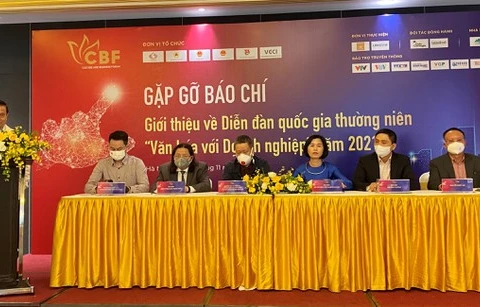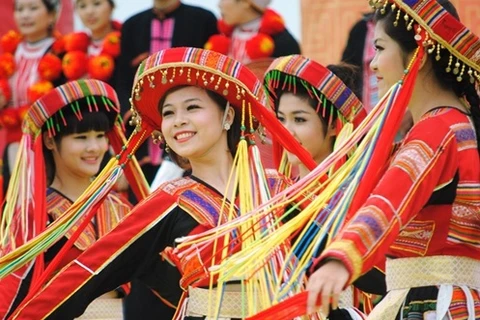
Cultural industry development will be based on the principle of ensuring harmony between preservation and development (Photo: VNA)
Hanoi (VNA) - The Hanoi municipal Party Committee has issued a Resolution on "Developing the cultural industry in the capital in 2021-2025, with orientations to 2030 and a vision to 2045,” to promote the development of Hanoi’s culture and people in a sustainable way and meet international integration’s requirement.
Culture contributes to GDP growth
Secretary of the Hanoi Party Committee Dinh Tien Dung said that the Hanoi Party Committee determines that the development of the cultural industry will be based on the development of Vietnamese culture and people in general and the capital city in particular. This will maximise cultural and human resources, creating endogenous strength - an important driving force - for the sustainable development of the capital.
Developing the cultural industry is a priority of the socio-economic development strategy, to become a spearhead economic sector and make effective contributions to GDP growth, creating jobs and income and promoting the development of other industries and fields, contributing to the goal of rapid and sustainable development of the capital.
Cultural industry development will be based on the principle of ensuring harmony between conservation and development, bringing into full play the potential, strengths and traditional cultural values imbued with the thousand-year-old capital’s identity. It aims to promote international integration, absorb the cultural quintessence of humanity, contribute to fostering and developing Thang Long-Hanoi cultural values, turn Hanoi into a "creativeness city", and promote and enhance the position and image of the capital, as well as Vietnam, to the region and the world.
The Hanoi Party Committee has determined that it will focus on investing in developing several potential and advantageous fields such as; cultural tourism; performing arts; crafts; design; advertisement; fine arts, photography and exhibitions; cinematography; fashion; cuisine; software and entertainment games; television and radio; and publishing, following the capital's practice in each specific period.
By 2025, the capital's cultural industry will become an important economic sector, creating a new driving force for economic, cultural and social development. By 2030, the capital's cultural industry will be spearheading the economic sector, strongly promoting the development of other industries and areas. Revenue from cultural industries increases year by year, expected to contribute about 8% of the city's GDP.
By 2045, the capital's culture industry will be a spearhead economic sector, contributing about 10% of local GDP; and become a "creativeness city" of Asia, a globally connected city, a large unique cultural and tourist centre, with international competitiveness.
Building a creative eco-system
To realise the above goals, the city will focus on key tasks and solutions, such as creating a favourable environment and policies to develop the cultural industry, building infrastructure, facilities and a creative cultural ecosystem with a cultural market and education system for a generation of the audience that appreciates traditional and modern cultural values.
 An artistic road in Phuc Tan has turned a dumping ground nearby Hong River into a community creativeness space (Photo: VNA)
An artistic road in Phuc Tan has turned a dumping ground nearby Hong River into a community creativeness space (Photo: VNA) The city will increase science and technology application, cultural industry market development, investment attraction and support, and domestic and international cultural cooperation.
Hanoi in particular will focus on building, developing and affirming UNESCO’s “creativeness city” with a series of specific measures, such as building a Hanoi creative design centre, promoting connections and investment for creativeness spaces, implementing a project on TV series on Hanoi creative talents, organising an annual Hanoi creative design festive week and forming a network of young creative designers./.























